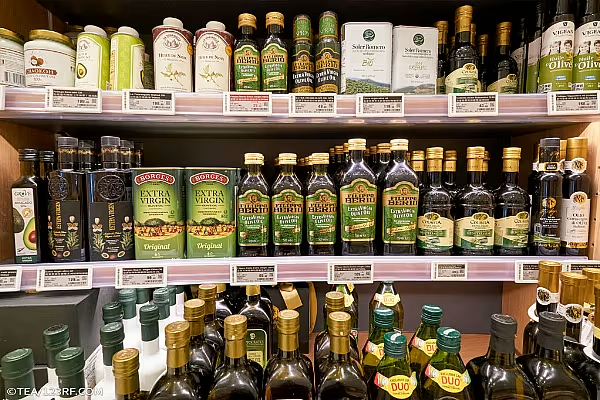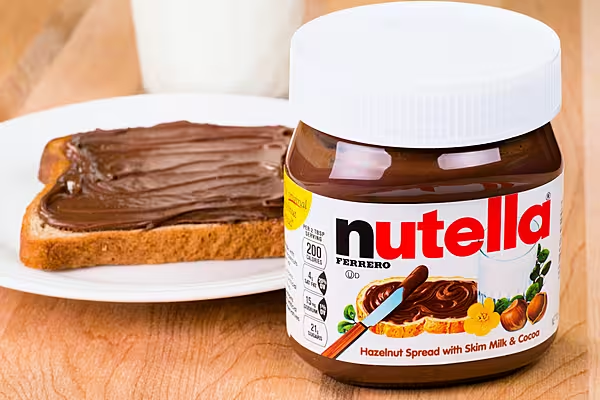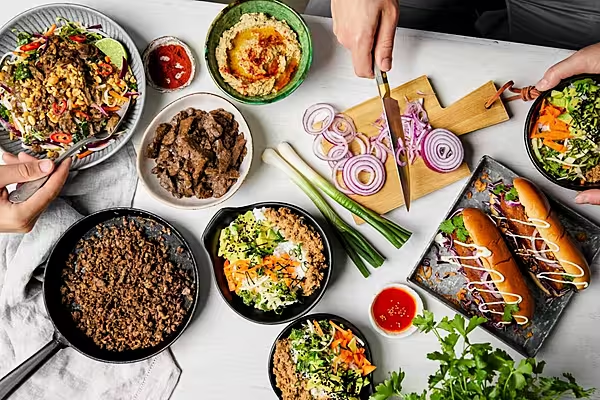The Olive Oil and Table Olive markets have seen significant growth in recent years, but what effect has the pandemic had on both production and consumption levels? Conor Farrelly and Stephen Wynne-Jones report. This article first appeared in ESM July/August 2021.
The Table Olive and Olive Oil markets have been embraced by consumers in recent years to such a degree that the coronavirus pandemic may yet prove to be a blip in an otherwise buoyant industry.
In fact, such has been the heightened demand for healthier, better-for-you products over the past few months that the crisis has largely accelerated both categories, with an increased use of olive oil for at-home cooking, and olives being seen as a healthier alternative to traditional snack opportunities.
OLIVE OIL
The challenges of the past year – both coronavirus and weather related – don’t seem to have hampered European olive oil production too much, although a closer look at the regional data indicates that not all markets saw a bounce. According to a recent analysis of the olive oil market published in May of this year, by the EU Committee for Common Organisation of Agricultural Markets, 2020/21 global production has decreased for the third consecutive market year.
In the EU, on a year-on-year basis, production grew by 7% in the 2020/21 period. This contrasts with production from the rest of the world, which fell by 4% overall, while non-EU production went down by 22%. Compared with the five-year average, EU production was 1% lower in the 2020/21 season, compared to a decline of 2% on a global level.
Spain Leads The Way
Within the EU, Spain was the dominant olive oil producer in the EU, increasing production by 24% in the 2020/21 season. This compensated for declines in other markets, with Italy seeing production go down by 26%, Greece flat (0%), and Portugal down by 29%, while other EU countries saw growth of 33%.
Spain’s dominance in the olive oil market over other EU countries is illustrated by the fact that it produced more in the past year than all other countries combined, at 1.4 million tonnes. The second-biggest markets – Italy and Greece – produced 270,000 tonnes and 275,000 tonnes, respectively.
In non-EU markets that supply Europe, production fell by 22% year on year, with Tunisia seeing a production decrease of two thirds (66%) and Turkey down by 1%. Morocco’s production went up by 17%, however.
Olive oil imports from non-EU countries fell by 4.2% between October 2020 and March 2021, according to Eurostat data, with Tunisia the biggest trade partner for EU countries, distributing some 86,818 tonnes across the member states, accounting for 82% of all olive oil imported into the EU. Imports from Tunisia hit a peak in March 2020, before coronavirus lockdowns brought imports back down to 2018 levels, however, the market has seen a recent pickup once again.
In terms of olive oil exports from the EU, these increased by 10.1% in the October-to-March period, with the United States being the bloc’s biggest customer, accounting for 35% of exports, followed by Brazil (12%), the United Kingdom (8%) and Japan (6%). Export volumes were up 28.3% year on year, the data showed, due to the lifting of trade tariffs between the US and the EU, relating to the Boeing-Airbus dispute.
Read More: Buyer's Brief – Olive Oil Markets Set To Rise?
Category Analysis
ESM has teamed up with retail and FMCG market intelligence company IRI to explore the performance of the Olive Oil category over the past year, across seven European markets: France, Germany, Greece, Italy, the Netherlands, Spain and the UK.
France
Olive oil sales in France increased by 8.3% in the period (MAT 30 May 2021), with the category worth €598 million, according to IRI. Within this, infused olive oil, while a relatively small category (€13 million), saw significant growth of more than a third (35.4%). Volume sales for the year increased by 9.5%, while prices fell by 1.1%.
According to Anne-Laure Almeida, business unit director of IRI France, the period saw a “good trend for olive oils” overall, driven by “more cooking by French people since the beginning of 2020, due to the health-care crisis, and less consumption out of home”. Olive oil is also a category “driven by consumers’ expectations”, as they seek out healthy products.
“In stores, Olive Oils also benefit from assortment enlargement. Notice that volume rise is faster than value rise because of promotional activity this year,” Almeida added.
Germany
Germany has reported olive oil sales of €423 million over the past year (MAT 2 May 2021), according to IRI, with value sales increasing by 18.7%. This positive growth was also reflected in volume sales, which recorded an increase of 21.8%, while prices fell by 2.5%.
As Britta Lenze of IRI Germany explains, “Olive oil is the strongest oil segment in Germany, due to its high price level,” while it has also seen strong development in terms of volume gains. “After a longer period of increasing price trends, due to bad olive harvests and raw-material shortage, the market has experienced an ongoing price uplift,” Lenze explains, adding that the value decline it experienced reflects a slight reversal of what has been a continued upward trend in recent years.
The category isn’t without competition, either. As Lenze puts it, “As well as olive oil, niche markets such as walnut- and pumpkin-seed oil also show a positive binary development in value and volume sales.”
Greece
Greece has reported olive oil sales of €64 million over the past year (MAT 25 April), which indicates a sharp decline in value sales, of 9.7%. Volume sales also decreased, by 1.3%, with Greece the only market in this study to see negative volume evolution year on year. The per-kilogram price of olive oil in Greece also declined, by 8.5%.
As Vangelis Foskolos, senior consultant/sales at IRI Greece, explains, olive oils are a core part of the Greek diet, with large volumes traditionally sold through the supermarket channel, with much product sold in bulk (e.g. five- or ten-litre packages). Prices in the supermarket channel have seen a “significant drop” in the past year (of 9.7%), Foskolos explains, due to “shelf price reductions and increased promotional intensity”, continuing a trend seen in recent years.
The Greek olive oil market has also seen low penetration for private label, which continues to decline in value share, to 12.5%, compared to 17.4% in 2018, according to Foskolos.
Italy
Olive oil sales in Italy amounted to €943 million during the full-year period (MAT 30 May 2021), according to IRI – the highest sales total of all the countries featured in this report. Value sales decreased by 2.9%, with standard olive oil seeing the biggest drop (7.1%), while extra-virgin oil value sales fell by 2.5%. In terms of volume sales, which were up 1.4% overall, extra-virgin (+1.8%) and pomace (+6.7%) showed an increase, while volume sales of standard oil declined (-1.8%). Prices across all categories fell in comparison to last year, by 4.3% overall.
According to IRI Italy’s Francesca Fumagalli Ceri, the Olive Oil category had a solid 2020, registering positive value (+3.3%) and volume (+8.6%) sales, particularly in the supermarket and discount channels. Average prices fell due to a “reduction in promotional pressure”, however, prices increased marginally in the discount channel.
Extra-virgin olive oil, which represents around 90% of the total market, performed particularly well. Since then, however, and as reflected in the data shown here (to May 2021), the trend has reversed due to a ‘rebound effect’. Price reductions have maintained, although promotional activity has commenced once again, Fumagalli Ceri added.
The Netherlands
The Netherlands saw olive oil sales of €110 million in the full year to 2 May 2021, according to IRI, with the standard and extra-virgin segments seeing sales of €62 million and €40 million, respectively. While it holds a relatively small share of the market (€9 million), infused olive oil saw a value sales increase of 49.8% (with volume sales rising by 51.1%). Pricing was down marginally (-0.6%), with standard and extra-virgin oils both seeing price decreases of 1.4%.
“Olive Oil is increasing strongly in both value sales – 14.8% – and volume sales – 15.5%,” says Sjanny van Beekveld of IRI Netherlands, with stronger volume growth driven by a “lower price per volume”. Infused olive oil continues to grow, but standard olive oil remains the dominant segment, accounting for more than half of total sales, van Beekveld notes.
Spain
Total olive oil sales of €908 million were recorded in Spain during the full-year period (MAT 25 April 2021), with value sales declining by 1.4%. Extra-virgin olive oil was the only segment to see value sales rise, by a marginal 0.4%. Volume sales, meanwhile, went up by 3.5% overall, with extra-virgin olive oil seeing volumes go up by 3.7%. Prices fell across every category, most notably in standard olive oil, where prices dropped by 6.5%.
According to Cristina García of IRI Spain, as out-of-home consumption shifted, at home (due to lockdown restrictions), demand for olive oil increased.
“[Extra-virgin and virgin oils are the segments with the] most growth in terms of volume,” García says. “Higher-quality options are preferred by consumers, who are increasingly concerned about their health.”
With this in mind, she notes that other oils, such as sesame oil or coconut oil, are entering the market, seeking to promote their healthy image and take share away from the Olive Oil category.
The UK
The UK saw olive oil sales of €229 million over the past year (MAT 15 May 2021), according to IRI, with impressive value sales growth of 13.4%, mainly driven by a 16.2% increase in the extra-virgin segment, which accounts for more than half of the total market. From a volume perspective, UK sales outperformed all other countries in this report, with an overall increase of 17.5%, with infused (+24.7%) and pomace (+23.1%) seeing the largest volume sales gains.
The sector did see declines in terms of price evolution, however, as the price per kilogram declined across the board (-3.5%), with standard olive oil seeing the biggest decline (-8.5%).
Branded olive oils account for more than half of the category value in the UK. They have seen positive growth in the past year, according to IRI, however, private label has seen a decline.
TABLE OLIVES
According to EU data, world production of table olives was above average in 2020/21, rising to 3.09 million tonnes (2019/20: 3.04 million tonnes). On a year-on-year basis, EU production rose by 11% in 2020/21, in contrast with a decline in non-EU countries (-2%), while global production went up by 2%. Compared to the five-year average, EU production of table olives was flat (0%) in 2020/21, compared to non-EU growth of 7% and global growth of 5%.
Spain was the dominant producer of table olives in the bloc, producing 546,000 tonnes – a 19% increase on the previous year (458,000 tonnes). Greece produced 230,000 tonnes of table olives – a 4% increase on the previous year (222,000 tonnes). Table olive production in Italy fell by 17%, however, while Portugal was flat. Set against the five-year average, Spain saw a 3% decline, with Italy down by 6% and Portugal down by 2%, although Greek production of table olives went up by 9%.
Trade Balance
The EU trade balance for table olives has decreased, with total extra-EU imports of table olives of 91,000 tonnes (mainly from Morocco and Turkey) between September 2020 and March 2021 against total exports of 261,000 tonnes.
The US remains the biggest single market for extra-EU exports, however, the export level is well below the heights that it experienced in 2019, before the Boeing-Airbus trade dispute led to retaliatory tariffs on EU exports. That these have now been lifted will be welcomed with open arms by the bloc’s olive producers.
Category Analysis
Working alongside retail and FMCG market intelligence company IRI, ESM examines the performance of the Table Olives category over the past year, across seven European markets: France, Germany, Greece, Italy, the Netherlands, Spain and the UK.
France
Table olive sales in France have amounted to €190 million over the past year (MAT 30 May 2021), according to IRI, with value sales up by 3.5% on the previous year. Green olives were the biggest category by value sales (€89 million), growing by 4.1%, however, mixed olives showed the highest year-on-year value growth, at 5.2%. Volume sales went up by 4.6%, with mixed and stuffed olives seeing the highest volume growth, at 7.8% each. Overall, the price per kilogram dropped by 1.1%, with a drop of 4.3% for stuffed olives the biggest decline.
While the Table Olives category is showing growth in France, it lags behind growth in the global market, according to Anne-Laure Almeida, business unit director of IRI France.
“Organic is always key in this segment, with growth of 36.6%, thanks to more offerings on the shelf, while the non-organic trend is flat,” she explains.
Germany
In Germany, table olive sales have totalled €174 million over the past year (MAT 2 May 2021), with value sales growing by an impressive 15.0% – a sharper rise than those of the other markets studied. Volume sales were also up by double-digits, rising by 10.8%. The price per kilogram rose by 3.8%.
“In spite of an increasing price level within the German market, olives have achieved a positive binary development in volume sales,” commented Britta Lenze of IRI Germany. “The higher price trend results in an even more advanced development of value sales.”
Greece
Greece has recorded table olive sales of €5 million over the past year (MAT 25 April 2021), with value sales down marginally (-0.3%) and volume sales rising by 4.3%. The price per kilo fell by 4.2%, which is a steeper drop than other markets included in this study.
According to Vangelis Foskolos, senior consultant/sales at IRI Greece, average prices for table olives have “continued to drop” over the past few years – a trend that has continued in 2020/21. The supermarket channel remains a key outlet for table olive sales, with demand through this channel mainly driven by local producers, he adds.
Italy
Table olive sales in Italy have remained at €236 million over the past year (MAT 30 May 2021), according to IRI. While the market is dominated by the green-olive segment (which saw sales of €113 million), the stuffed-olive segment was a real growth-driver during the period, experiencing 17.9% value growth and 15.7% volume growth.
By way of comparison, the mainstream segments of green and black olives saw value sales growth of 1.8% and 2.0%, respectively, and volume sales gains of 2.0% and 3.2%. Prices per kilo went up marginally (0.2%), but this was mainly driven by a 1.9% increase in the stuffed-olive segment.
The Netherlands
With sales of €56 million over the past year (MAT 25 April 2021), traditionally, the Netherlands isn’t a major market for table olives, however, this is changing. A 14.1% increase in value sales across the category was driven by impressive growth in the black- and stuffed-olive segments (18.5% and 16.5%, respectively). As in Spain, the stuffed-olive segment accounts for the highest portion of sales in the Netherlands, at €41 million.
Volume sales rose by 11.9% – again, with stuffed olives leading the way (+13.5%). The price per kilo went up by 1.9% on a category level, but the green- and mixed-olive segments saw prices drop (-4.1% and -8.2%, respectively). According to Sjanny van Beekveld of IRI Netherlands, the value sales decline of the mixed-olive segment has been driven by this “strong price reduction”. Otherwise, both value and volume sales in the category are “increasing strongly”.
Spain
Spain is Europe’s biggest market for table olives, with sales of €360 million in the past year (MAT 25 April) – that’s close to twice the sales in France, and more than six times that of the Netherlands.
An increase in value sales of 7.3% during the period was driven by increases in every segment, with the stuffed-olive segment – the largest, with €167 million of sales – seeing a moderate 2.1% increase, compared to double-digit value sales growth in the green (+10.7%), black (+11.8%) and mixed (+15.7%) segments.
Volume sales went up by 6.0% on a total-category level, however, stuffed olives were the exception, seeing a 1.5% decline. The price per kilo went up by 1.3%, with black (+3.8%) and stuffed (+3.7%) olives seeing the biggest increases in price during the period.
The UK
The Table Olives category has maintained healthy sales in the UK over the past year (MAT 15 May 2021), according to IRI, with value sales of €49 million – a 9.3% increase. Green olives (€27 million), which account for more than half of the category, saw moderate growth of 3.7%, however, black (+16.9%) and mixed (+23.0%) olives both reported double-digit growth.
In terms of volume sales growth, the Table Olives category reported a 10.1% increase – again, with black (+17.7%) and mixed (+10.5%) olives the key growth-drivers. From a pricing perspective, the mixed-olive segment bucked the trend, with prices rising by 11.3%, compared to an overall category price decline of 0.8% – perhaps an indication of a future trend?
© 2021 European Supermarket Magazine – your source for the latest A-Brands news. Article by Stephen Wynne-Jones. Click subscribe to sign up to ESM: European Supermarket Magazine.














